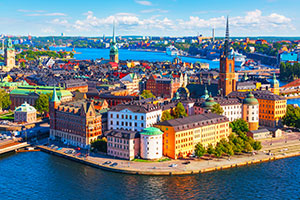13-Nights The Baltic States & Scandinavia

13-Nights The Baltic States & Scandinavia
Europe
Cosmos
Vacation Offer ID 1566780
Reference this number when contacting our travel specialist.
Cosmos
On this Baltic States and Scandinavia adventure, discover Denmark, Sweden, and travel through Germany, Poland, Finland, and the Baltic States of Lithuania, Latvia, and Estonia. Along the way, experience UNESCO World Heritage Sites, old cities, beautiful scenery, and fascinating historic sights-with overnights in Poznan and the capital cities of Copenhagen, Berlin, Warsaw, Vilnius, Riga, Tallinn, Helsinki, and Stockholm. In Copenhagen, see the famous Little Mermaid statue. Walk through Vilnius’ Old Town, dating to the 11th century and with historic Gothic, Renaissance, Baroque, and Classical style buildings. In Riga, immerse yourself in the Old City, founded in 1201 and a UNESCO World Heritage Site, with a variety of architectural styles. Tallinn's Old Town also joined the list of UNESCO World Heritage Sites thanks to its watchtowers, cobbled lanes, and medieval houses. Helsinki's sightseeing highlights include the Lutheran Cathedral, completed in 1852. Your affordable tour includes ferry crossings from Denmark to Germany, and from Tallinn to Helsinki, as well as an overnight cruise from Helsinki to Stockholm with music, dancing, and shopping on board. Visit Latvia’s 16th-century baroque Palace of Rundale, the former summer residence of the Duke of Courland. Stroll on the sandy beach in Parnu, Estonia’s lively historic seaside town. Throughout your budget-minded Baltic States and Scandinavia tour, you’ll be spoiled by so many scenic landscapes. Enjoy the adventure of a lifetime; it’s a perfect vacation for value-minded travel lovers who want to experience it all.Featured Destinations
Valid Date Ranges
Prices listed are land-only, per person, based on double occupancy and are subject to change and availability. Itinerary and map subject to change. The "Starting at" or listed price is based on the lowest price available to book. Price is per passenger based on double occupancy and does not include international airfare. Some tours require intra-vacation flights (and in some cases intra-vacation segments must be purchased from Cosmos) in which case intra-vacation air and taxes are included in the price shown.
All fares are quoted in US Dollars.





